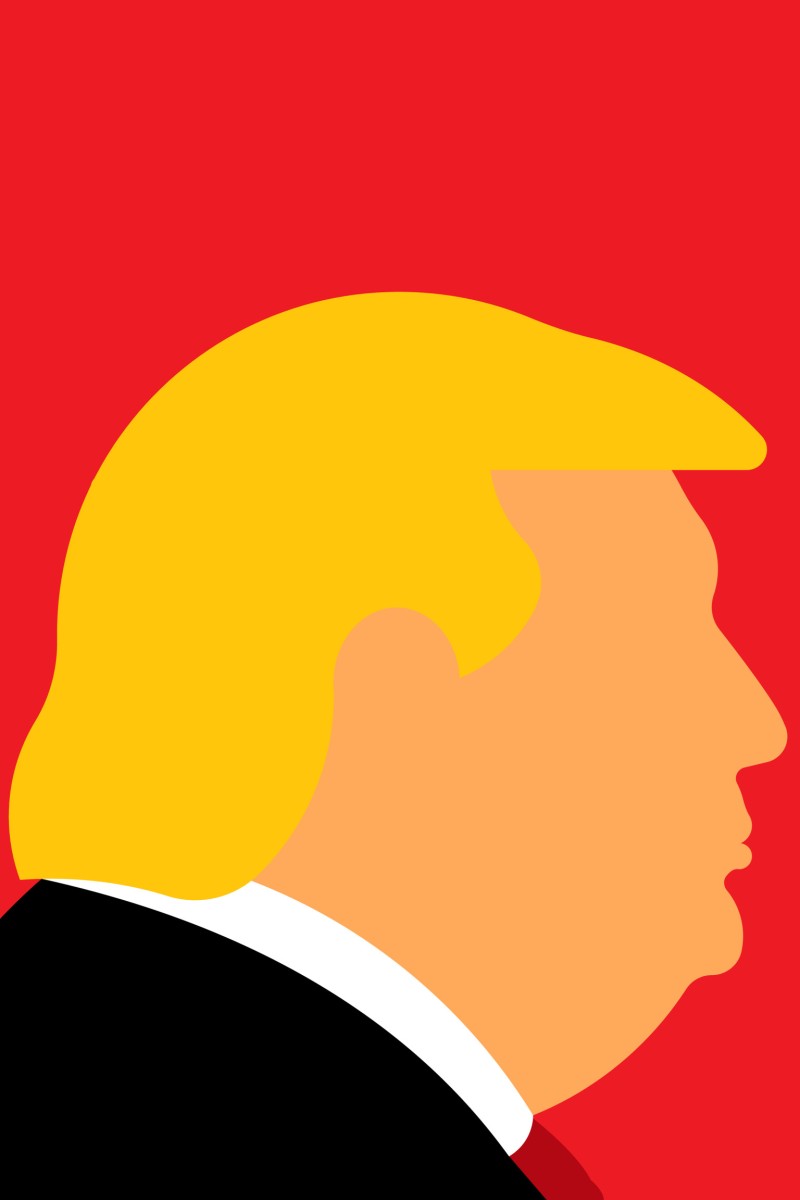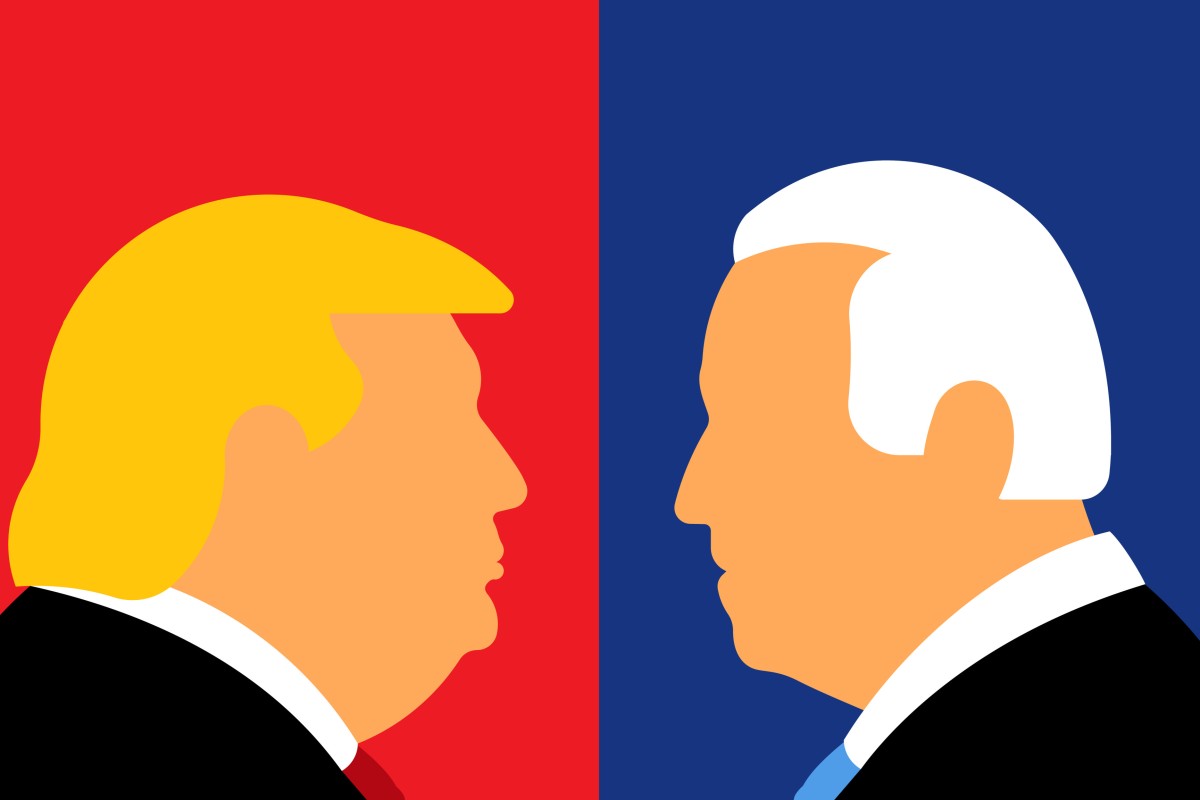
Explainer: How do US presidential elections work, and what should I know about 2024?
- Although the election isn’t until November, the process to choose Republican and Democratic nominees officially kicks off in January
- This year will likely see a rematch between President Joe Biden and former leader Donald Trump, currently facing charges for attempts to overturn the 2020 election
 The 2024 US presidential election is likely to be a repeat of 2020, pitting president Joe Biden against former president Donald Trump. Photo: Shutterstock
The 2024 US presidential election is likely to be a repeat of 2020, pitting president Joe Biden against former president Donald Trump. Photo: ShutterstockIf you’re a regular news reader, then without a doubt, you’ve seen articles about the 2024 US presidential election. Campaigns start early and last long; even though the election isn’t until November 5, 2024, debates are already being held, and candidates are travelling around the US to convince people to vote for them.
Elections in the US can be confusing, so here’s a quick explainer of what’s going on.
Who is running for president?
The US has two main political parties: Republican and Democrat.
As of the time of writing, six people are hoping to become the Republican nominee for president: former president Donald Trump; Florida governor Ron DeSantis; former South Carolina governor Nikki Haley; businessman Vivek Ramaswamy; former New Jersey governor Chris Christie, and former Arkansas governor Asa Hutchinson.
On the Democratic side, President Joe Biden is running for re-election. Writer Marianne Williamson and Minnesota congressman Dean Phillips have also entered the race, but it is doubtful either will be picked as the Democratic nominee.
Similarly, many people assume that Trump will be chosen to represent the Republican side – a December 12 poll in Reuters found that 61 per cent of Republicans said they would vote for the former president, while his closest rivals – Haley and DeSantis – only polled at 11 per cent each.
The 2024 election will likely come down to Trump and Biden, just like in 2020. It would be the first presidential rematch since 1956. If Trump wins, he would become only the second president in US history to serve two non-consecutive terms; the last was Grover Cleveland, president from 1885 to 1889 and 1893 to 1897.
When do we know for sure who the candidates are?
The process officially starts on January 15, when Republican voters in the state of Iowa will cast their vote in support of their favourite potential nominee. Iowa is a small state with an overall population of about 3.2 million, and around 1.7 million people voted for president in 2020.
Things really kick off on March 5, called Super Tuesday, when over a dozen states will hold their primary elections to choose the nominees.
However, nothing is official until the two parties hold their conventions and announce who will run for president and vice-president. The Republican convention will be held from July 15 to 18, while the Democratic convention takes place from August 19 to 22.
The need for governance in AI ahead of the 2024 US presidential election
Now that we have the nominees, how is the president chosen?
Let’s fast forward to election day, November 5. We have our Republican and Democratic candidates and a few others representing third parties, who usually only get a small percentage of votes. Voters have mailed in their ballots or gone to vote in person. It’s one person, one vote, right?
Well, yes and no.
Let’s say Candidate A wins 65,853,514 votes while Candidate B gets 62,984,828 votes. You would assume Candidate A would win the election and become president, right?
Nope – this is how many votes Hillary Clinton (Candidate A) and Donald Trump (Candidate B) each got in the 2016 presidential election, and you probably remember who won that one.
That’s because the US uses something called the Electoral College. Each state has a certain number of electoral votes depending on its population. For example, California, which has a population of nearly 39 million, has 54 electoral votes, while Mississippi, with a population of a little less than 3 million, has six electoral votes. These numbers can change from time to time due to population shifts.
A total of 538 electoral votes are up for grabs, and a candidate must get at least 270 to be declared the winner. In a majority of states, if a candidate receives more than 51 per cent of the popular vote, they get all that state’s electoral votes.
Sound confusing? Here’s an example: if a state has 15 electoral votes and 2 million voters, then a candidate needs 1,020,000 people – 51 per cent of voters – to choose them to win all 15 electoral votes. It doesn’t really matter if the remaining 980,000 people vote for them; they have already reached the minimum amount needed to win the state.
5 memorable US election moments, from Donald Trump and Hillary Clinton to JFK and Richard Nixon
Trump won 304 electoral votes in 2016, taking many less-populated states with fewer electoral votes and stacking them. Clinton won 227 electoral votes thanks to more populated states like California, New York and Illinois. It’s the second time in recent history that the person who lost the popular vote won the election; in 2000, George W. Bush became president over Al Gore, winning 271 electoral votes compared to Gore’s 266. However, according to Britannica, Gore won the popular vote by more than 540,000 votes.
The Electoral College is highly controversial, with some saying it doesn’t truly represent the idea of “one person, one vote”. However, supporters of the system say it requires politicians to appeal to people all over the country instead of just one group.
What else is there to know?
According to the BBC, Donald Trump has been criminally indicted four times and will have a series of trials to attend in 2024 as he runs for president again.
Even if he is convicted of a crime before the election, he can still be a presidential candidate – there is no law that requires someone to have a clean criminal record if they want to be the US head of state. No one is sure of what could happen if Trump is elected while he is serving a prison term.
The charges against Trump range from allegations that he mishandled important classified documents and attempted to overturn the 2020 presidential election.
Another case concerns his alleged role in the insurrection in Washington DC on January 6, 2021, when Trump supporters stormed the Capitol building – where members of Congress work – to stop former Vice-President Mike Pence from officially declaring Joe Biden the winner of the 2020 election. Trump has repeatedly called the election a fraud and claimed it was stolen from him, a belief he maintains to this day, and many are concerned about what could happen in 2024, especially if he loses.
